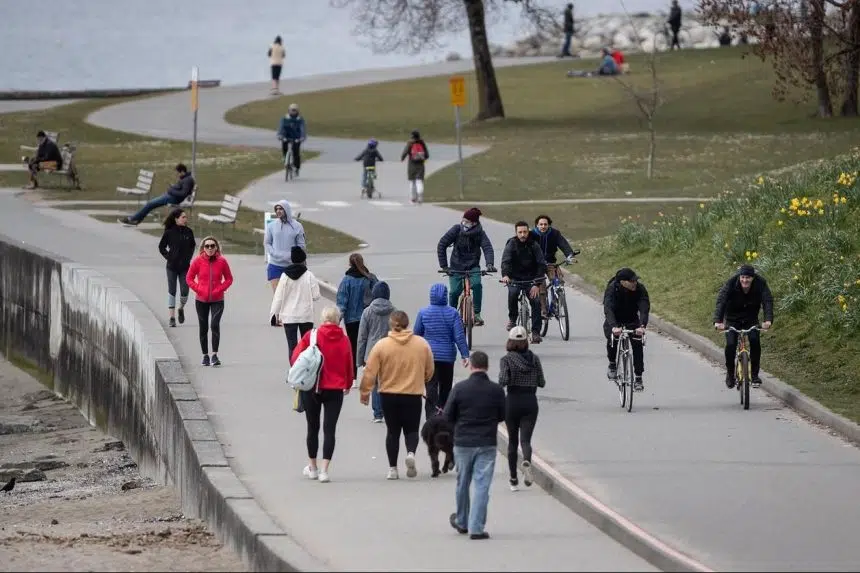OTTAWA – Prime Minister Justin Trudeau’s tone hardened Monday as he warned Canadians ignoring COVID-19 mitigation measures that “enough is enough.”
Trudeau said across the country, people need to realize that ignoring social and physical distancing protocols is putting others at risk, from the elderly to the essential workers.
“Enough is enough. Go home and stay home,” Trudeau said. “This is what we all need to be doing and we’re going to make sure it happens.”
How the federal government will or could make sure it happens has been the subject of debate for days, and was expected to form a large part of a scheduled call later Monday between Trudeau and the premiers of the provinces and territories.
Many have declared states of emergency, which among other things, give authorities latitude to impose fines or other penalties on those who violate quarantine orders.
On Monday, Ontario and Quebec also ordered all non-essential businesses to close as of Tuesday, while Nova Scotia imposed new restrictions at its provincial boundary with New Brunswick.
There, Premier Blaine Higgs said officials were checking to make sure businesses were complying with closure orders and social distancing measures, with a compliance rate of 94 per cent.
Variations in provincial responses have continued to put pressure on the federal government to implement national measures so all of Canada can be acting in unison, and Higgs said he supported that approach.
But Trudeau has so far resisted the idea of putting into place a piece of legislation that would allow for that, the Emergencies Act. Trudeau said doing so requires a discussion with provinces as it would take power out of their hands.
Ontario Premier Doug Ford said Monday the provinces want their own authority.
“I know every premier feels the same as I do,” he said.
“It’s going to be up to the prime minister to make that decision, but we have to make sure that we’re making decisions as a province because the situation in Ontario is not the same situation (as) maybe in another province.”
Health officials are all unified in the message that large-scale social-distancing measures are required, said Dr. Theresa Tam, Canada’s chief public health officer.
But what that looks like in one province will differ from another, she said.
A decision to close a provincial border, for example, might be linked to a sudden influx of returning travellers, where another province doesn’t have that problem at all.
“Each have their very individual requirements,” Tam said of the provincial measures.
One federal need seems to be a need for better data.
The federal government announced a contract Monday with a Toronto-based firm, Blue Dot, to use its analytics to support modelling and monitoring of the spread of COVID-19.
The provinces have also been asked to increase and harmonize the data they collect, said Health Minister Patty Hajdu, adding she hopes it is also an issue Trudeau will raise with the premiers later Monday.
Another issue on the table will be medical supplies. Hajdu said co-ordination is needed to ensure regions are prepared for what might lie ahead but also for what they are facing now.
Trudeau also announced that Canada is spending $192 million on developing and producing vaccines for the novel coronavirus.
He said being prepared to mass-produce a vaccine, no matter who creates it, will be essential for suppressing COVID-19 in Canada in the long run.
As of mid-day Monday, there were 2,035 confirmed and presumptive COVID-19 cases in Canada.
Most people diagnosed with COVID-19 experience mild or moderate symptoms, such as fever and cough, and the majority of those who contract the virus recover. Some may have few, if any symptoms, or may not know they’re infected because symptoms of the novel coronavirus are similar to a cold or flu.
However, for some, including Canadians aged 65 and over, those with compromised immune systems and those with pre-existing conditions, the illness can be much more severe. Among the Canadians diagnosed with the illness so far, 10 per cent have required hospitalization, with fewer than five per cent of cases requiring admission to the ICU.
Stephanie Levitz, The Canadian Press







